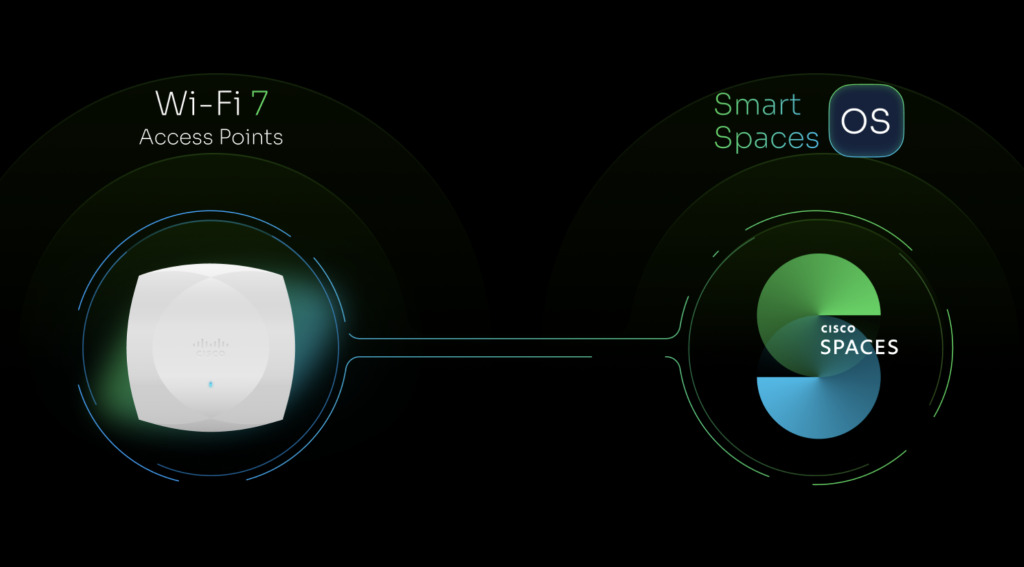
Wi-Fi 7 is the dawn of a new era in wireless technology, offering unprecedented speed and reliability for our increasingly connected lives. Let’s take a look at the advancements in Wi-Fi 7, highlighting its potential to revolutionize smarter spaces with enhanced network capabilities and seamless connectivity.
What Is WiFi 7?
Wi-Fi 7 is the next-generation wireless standard designed to deliver faster speeds, lower latency, and higher capacity compared to its predecessors, Wi-Fi 6 and Wi-Fi 6E. It is engineered to meet the demands of modern connected environments, making it ideal for supporting multiple high-demand applications like real-time data transfer, IoT devices, and immersive technologies such as AR and VR. With its advanced capabilities, Wi-Fi 7 plays a crucial role in powering smart spaces, ensuring seamless connectivity for environments where numerous devices interact and function simultaneously. This evolution in wireless networking is set to redefine the way we experience technology in smarter, more efficient ways.
Key Features of WiFi 7
Faster Speeds for High-Performance Applications
Wi-Fi 7 leverages advanced technologies such as 320 MHz channel bandwidth and Multi-Link Operation (MLO) to deliver multi-gigabit speeds, significantly outperforming Wi-Fi 6 and Wi-Fi 6E. These enhancements make it ideal for high-performance applications like 4K/8K video streaming, cloud gaming, and massive data uploads, ensuring ultra-low latency and seamless experiences even in congested network environments such as airports, malls and hospitals.
Low Latency for Real-Time Communication
The technology also reduces latency for real-time communication, which allows simultaneous data transmission across multiple Wi-Fi bands to minimize congestion and improve reliability. Additionally, Time-Sensitive Networking (TSN) ensures deterministic latency for critical applications by prioritizing time-sensitive data packets.
Greater Capacity for IoT Devices
It supports numerous IoT devices by leveraging advanced technologies like MU-MIMO (Multi-User, Multiple Input, Multiple Output) and MU-OFDMA (Multi-User, Orthogonal Frequency Division Multiple Access), which allow it to manage multiple devices simultaneously without performance degradation. These improvements ensure efficient and seamless connectivity in high-density environments such as smart homes and offices.
Advanced Device Management
Wi-Fi 7 offers advanced device management capabilities by utilizing MLO to dynamically route traffic across multiple frequency bands (2.4 GHz, 5 GHz, and 6 GHz) based on network conditions, ensuring efficient and reliable communication even in congested areas. Additionally, Target Wake Time (TWT) optimizes power usage for IoT devices by scheduling communication times, enabling large-scale device coordination in smart spaces without overloading the network.
Enhanced Security with WPA3
WPA3 encryption, which comes integrated with this technology, enhances security by using 192-bit encryption mode and robust protocols like Simultaneous Authentication of Equals (SAE) to protect against brute-force attacks. This makes Wi-Fi 7 ideal for businesses handling sensitive data, ensuring higher privacy and safeguarding against cyber threats even in high-density and enterprise environments.
Benefits of Wi-Fi 7 for Smart Spaces
Seamless Communication for IoT Devices
Wi-Fi 7 ensures smooth communication between IoT systems by allowing devices to simultaneously connect across multiple bands (2.4 GHz, 5 GHz, and 6 GHz) for reduced congestion and improved reliability. It also employs MU-OFDMA and Target Wake Time (TWT) to efficiently manage high-density IoT environments, enabling simultaneous data exchanges and optimizing power usage for connected devices. These features are vital for enabling automation and seamless operation in smart spaces, such as malls, offices, and healthcare facilities. By providing reliable, scalable, and efficient device interaction, Wi-Fi 7 plays a crucial role in advancing smart building technologies and supporting real-time, interconnected operations.
Handling Environments With High Footfalls
It addresses the challenges of environments with large footfalls by allowing simultaneous connections across multiple frequency bands and more efficient allocation of bandwidth to numerous devices. Its increased capacity, higher throughput, and reduced latency ensure businesses can manage environments like stadiums, airports, and offices, where thousands of devices and users require stable connectivity. By supporting peak speeds of up to 46 Gbps and facilitating intelligent traffic management, Wi-Fi 7 minimizes the risk of network congestion, ensuring seamless performance even under heavy loads and high traffic scenarios. This makes it ideal for businesses that depend on reliable connectivity in crowded spaces.
Real-Time Data and Location Analytics
Wi-Fi 7’s low latency and high speeds facilitate real-time data processing and location-based services, enabling applications like space utilization tracking, asset management, and indoor navigation. These capabilities allow businesses to gather actionable insights on visitor behavior and operational efficiency in real time, unlocking opportunities for smarter decision-making and resource optimization. Such insights are crucial for enhancing customer experiences, improving workflow efficiency, and optimizing operations in environments like retail spaces and corporate offices. Wi-Fi 7 empowers businesses to adapt quickly to changing demands while offering tailored services based on accurate, real-time data.
Improved Connectivity in Challenging Environments
Wi-Fi 7’s ability to allow devices to seamlessly switch connections across various bands, ensures reliable connectivity even in challenging environments with obstacles like thick walls or metal structures. This enables consistent performance across large or complex spaces where traditional Wi-Fi systems may experience signal degradation. By maintaining stable connections in factories, warehouses, and multi-floor buildings, Wi-Fi 7 supports industries that require robust and uninterrupted networks for critical operations. Its ability to overcome physical barriers makes it ideal for diverse use cases, from industrial automation to smart building management.
Wi-Fi 7 Use Cases in Smart Spaces
Because of all these capabilities, Wi-Fi 7 Access Points (AP) play a crucial role in powering smart spaces. Cisco Spaces, when integrated with Cisco Wi-Fi 7 APs, optimizes performance in smart environments, enabling industries to leverage seamless connectivity for efficient operations and enhanced real-time analytics.
Corporate Workplaces
Cisco Spaces and Cisco Wi-Fi 7 APs, transform corporate workplaces into smart offices by delivering real-time analytics on space utilization, employee movement, and occupancy patterns. This data enables businesses to enhance energy efficiency, optimize workspace design, and boost employee productivity through tailored solutions and informed decision-making. Together, Cisco Spaces and Wi-Fi 7 empower organizations to create smarter, more efficient office environments.
Retail
They also enable retail stores to harness real-time location data and advanced connectivity to deliver personalized customer experiences. Cisco Spaces helps execute location-based promotions, and enhance customer engagement by tailoring offers based on shopper behavior. This empowers retailers to optimize operations while driving customer satisfaction and loyalty.
Healthcare
The integration also transforms healthcare facilities by enabling real-time location tracking of critical assets, staff, and patients, ensuring improved safety, operational efficiency and patient care. With seamless connectivity across IoT devices, it enhances communication, supports telemetry data collection, and streamlines workflows, helping hospitals and clinics deliver more responsive and coordinated services.
Public Venues
In public venues like sports arenas and airports, Cisco Spaces and Cisco Wi-Fi 7 help businesses to efficiently manage high volumes of visitors by leveraging real-time analytics and advanced connectivity. It enables indoor navigation, crowd management, and targeted engagement. This integration ensures smooth operations while enhancing visitor satisfaction.
Unlock the Full Potential of Wi-Fi 7 for Your Smart Space
Wi-Fi 7, integrated with Cisco Spaces, revolutionizes connectivity by delivering high-performance networks. Across industries like corporate offices, retail, healthcare, and public venues, it enables the creation of smart environments through advanced features such as occupancy monitoring, indoor navigation, and energy-efficient capabilities. By leveraging Cisco Spaces’ location intelligence powered by Wi-Fi 7, organizations can achieve operational efficiencies, enhance visitor experiences, and make data-driven decisions with ease.
The seamless integration of Cisco Spaces and Cisco Wi-Fi 7 access points, allows businesses to gain robust IoT support, AI-powered mapping, and real-time analytics, eliminating the need for siloed solutions or extensive custom projects. This platform enables unparalleled scalability and flexibility, driving outcomes such as improved sustainability, asset tracking, and exceptional space utilization.
Take a product tour to see how Cisco Spaces can transform your space by unlocking new possibilities through your Cisco network.


